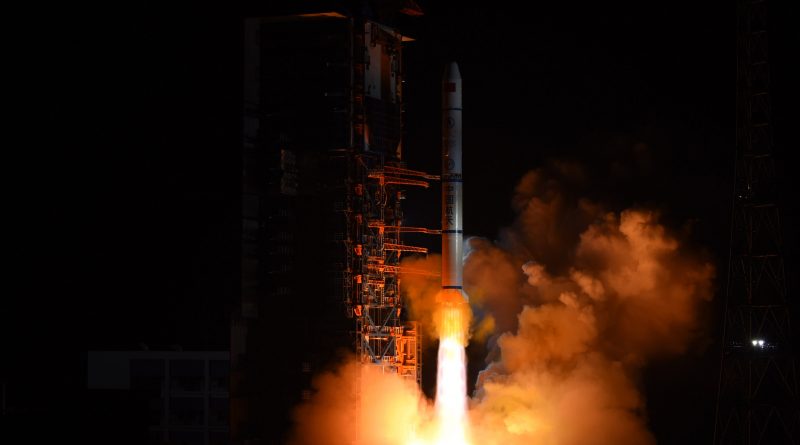China Closes 2017 with Third Yaogan-30 Triplet Launch for Electronic Intelligence-Gathering
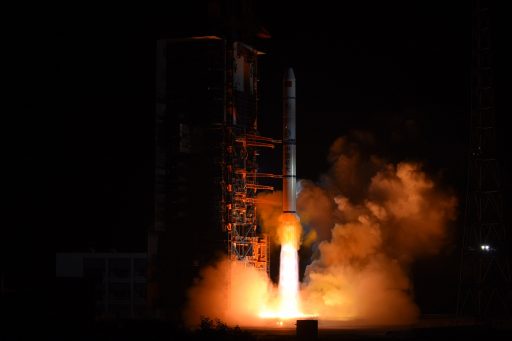
Two days after placing an Earth-imaging satellite into orbit, China was in action again on Monday for the country’s fourth launch of the month and the final expected Chinese mission in 2017, involving a Long March 2C rocket lifting the third group of Yaogan-30 electromagnetic-sensing satellites into orbit.
Monday’s launch took place at 19:44 UTC from Launch Complex 3 at the Xichang Satellite Launch Center and marked the third Yaogan-30 triplet launch in a period of only three months – establishing a nine-satellite constellation believed to be in charge of electronic intelligence-gathering over foreign territory. According to Chinese officials, the three satellites launched on Monday and their six companions already flying in formation are for “electromagnetic detection and related technical tests” – a statement in stark contrast to the constellation’s designation and layout.
Monday’s launch – barring any surprises by the Chinese – was the country’s final planned orbital launch of the year, closing 2017 with a total of 18 performed missions which places them third in the world, after the U.S. with 29 performed launches and Russia that expects to come in at 21, pending Tuesday’s planned Zenit mission from Baikonur. While the number of launches from the U.S. increased, primarily due to SpaceX’s record-shattering year, and the number of Russian launches dropping significantly, the Chinese have been the most constant over recent years, typically hovering between 18 and 22 missions.
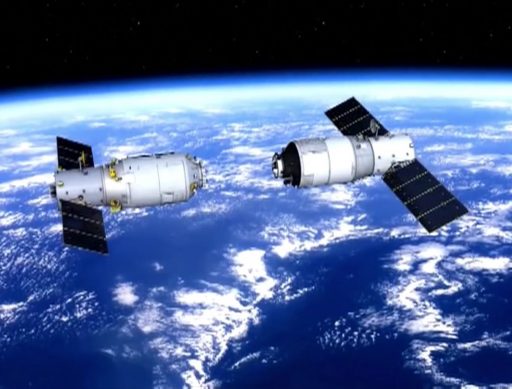
In 2017, China’s Long March fleet flew 16 out of the country’s 18 missions, the other two being the debut missions of the Kuaizhou-1A and Kaituozhe-2A all-solid-fueled, small satellite launch vehicles expected to become contenders on the commercial market. The heritage fleet of Long March 2/3/4 flew 13 times in 2017 and the new additions to the fleet, Long March 5/6/7, each conducted one mission.
China’s most visible success to the outside world was the Tianzhou-1 cargo mission to the Tiangong-2 space laboratory to demonstrate the ability to resupply the Chinese Space Station set to begin deployment before the end of the decade.
Lifting off on a five-month demonstration mission, the 13-metric ton Tianzhou-1 spacecraft sailed into orbit atop the second Long March 7 rocket. Over the course of its mission, Tianzhou-1 completed three separate docking maneuvers with the Tiangong-2 complex including one fast rendezvous demonstration and the spacecraft performed China’s first in-space refueling as the last critical technique needed for long-term operation of a large space station.
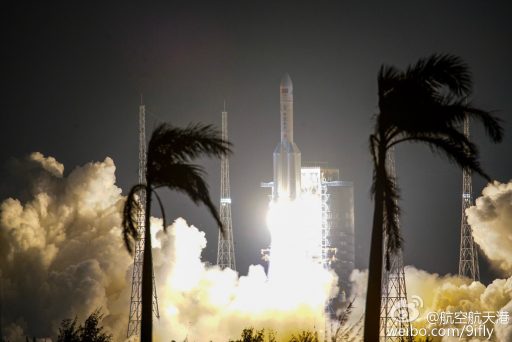
2017 was not free of failure for the Chinese, coming in close succession when on June 18, a Long March 3B encountered a problem with the attitude control system on its third stage and left the Zhongxing-9A communications satellite in a lower-than-planned orbit, and on July 2nd when China’s Long March 5 heavy-lift rocket hit major trouble on its second test flight. Climbing into the night over China’s new Wenchang Satellite Launch Center with the Shijian-18 satellite, Long March 5 suffered a turbopump-related failure of one of its two YF-77 cryogenic main engines and failed to achieve orbit.
The Long March 5 failure was a fairly severe blow to China’s plans of having the vehicle in an operational state by 2018 for the launch of the Change’s 5 lunar sample return mission and the Tianhe Space Station Core Module. These are now expected to occur in 2019 while corrective measures are implemented on the YF-77 engines for verification on a test flight toward the end of next year.
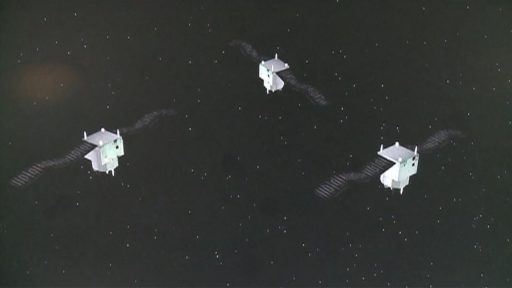
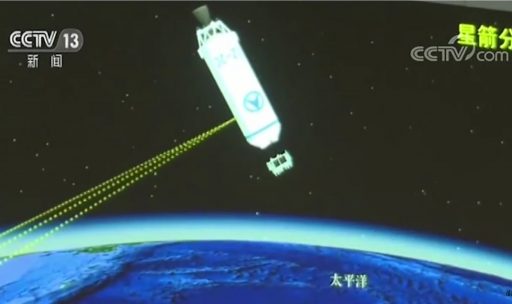
China’s last expected launch of 2017 closely mirrored two previous missions performed this year and deployed the first two Yaogan-30 triplets. The Yaogan-30 constellation was inaugurated on September 29, 2017 when Long March 2C returned to the Xichang Satellite Launch Center for the first time since 2004, deploying the satellites into an orbit of 590 by 600 Kilometers, inclined 35° (explaining why Xichang was selected over China’s other inland spaceports that usually support launches to higher inclinations).
Initially, this triplet launch flying under a Yaogan designation was not much of a surprise to analysts as there had been five such launches between 2010 and 2014, closely resembling the previous generation of the American NOSS (Naval Ocean Surveillance System) that operated close triangular formations of satellites to track the movements of foreign ships through triangulation of their radio signals. However, unlike NOSS and the previous Yaogan triplets, Yaogan 30 Group 01 drifted apart until stabilizing in an orbit of 598 by 602 Kilometers at a spacing of 120 degrees between the satellites within their orbital plane – optimized for coverage / revisit time.
Yaogan 30 Group 02 lifted off aboard a Long March 2C on November 24 and, within less than a month, had entered the same pattern with its three satellites spaced 120 degrees in their orbital plane. Looking at the placement of the orbital planes, it becomes clear that the constellation has been optimized for revisit rate: Group 01 has a right ascension of ascending node of 245 degrees while Group 02 has a 126° RAAN (longitude of the ascending node). Logically, Group 03 would be expected to have a RAAN between the two to obtain the best possible revisit rate for a three-plane constellation:

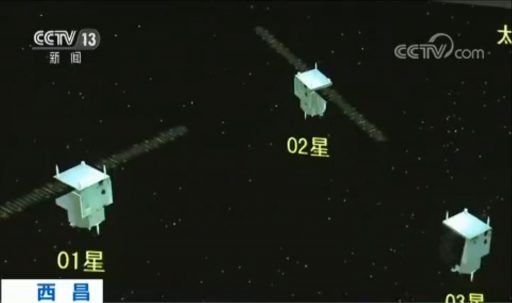
The low inclination for the mission appears peculiar compared to the 63° orbits used by the original Yaogan triplet formations and NOSS fleet operated by the U.S. – covering a greater latitude range. However, the 35-degree orbit of the Yaogan-30 series provides coverage of the world’s major population centers as well as the most frequented shipping lanes including areas of interest like the South China Sea, North Korea, the entire continental U.S. and the Chinese mainland.
Yaogan is the designation of China’s low-orbiting reconnaissance satellite fleet, inaugurated in 2006 and comprised of optical, radar and electronic intelligence-gathering satellites operating from different orbits between 400 and 1,200 Kilometers in altitude. The Chinese Academy of Science’s Small Satellite Center was revealed as the prime contractor of the Yaogan 30-01 satellites. According to official statements, the Yaogan 30 series is used for electromagnetic environment research – fitting within the typical cover for the Yaogan satellites that are described in official documents as serving scientific purposes even though their real tasks have long been revealed.
If the assumption for the placement of Group 03 within the constellation holds true, China will achieve a revisit rate of 30 minutes for most locations falling within the constellation’s visibility range – a valuable tactical tool when it comes to assessing activity at foreign sites through radio emissions.
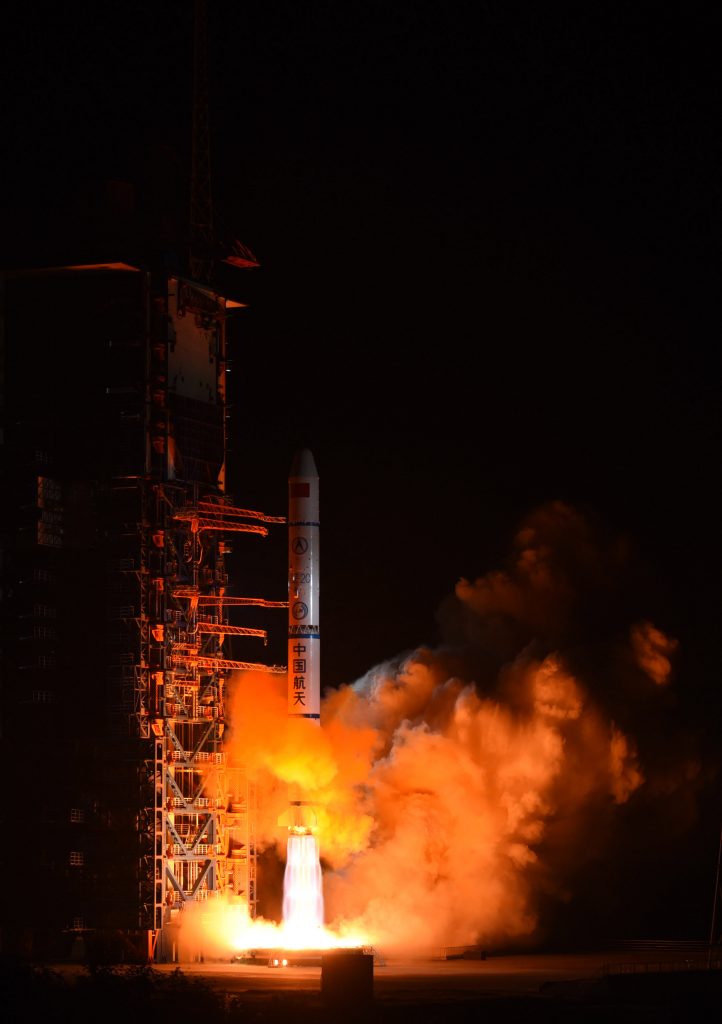
In action on Monday was the Long March 2C rocket, conducting its 44th mission, the third in 2017. A member of the Long March family, the 2C vehicle was derived from the DF-5 ballistic missile and first flew back in 1982, keeping a solid record with only one previous failure.
CZ-2C is a two-stage rocket standing 40.4 meters tall, 3.35 meters in diameter and weighing around 233 metric tons at liftoff, capable of placing 3,800 Kilograms into Low Earth Orbit. Both Stages of the Long March 2C use Nitrogen Tetroxide and Unsymmetrical Dimethylhydrazine as propellants while an optional third stage in the SMA and SM versions of the launcher uses solid propellant.
The first stage of the stack is 25.7 meters long and 3.35 meters in diameter with a launch mass of 171.3 metric tons including around 162.7 tons of self-igniting propellants. It hosts a YF-21B rocket engine, representing a cluster of four YF-20A engines each providing 750 Kilonewtons of Vacuum Thrust and firing for 122 seconds.
The second stage of the launcher is 7.58 meters in length and shares the first stage’s 3.35-meter diameter with a liftoff mass of 58,000kg, holding 54,700kg of propellants for consumption by a single YF-22 main engine and a four-chamber vernier engine tasked with providing attitude control. YF-22 provides a vacuum thrust of 742 Kilonewtons and each YF-23 vernier has a vacuum thrust of 10.2kN. The second stage has a burn time of 130 seconds for the main engine and up to 287 seconds for the verniers to accomplish a circular orbit insertion when required.
The optional SMA Upper Stage is 2.7 meters in diameter and 1.5 meters long, generating a thrust of 10.78 Kilonewtons by burning 150 Kilograms of solid propellant. Flying in its two-stage configuration, Long March 2C can lift 1,400 Kilograms into a typical Sun Synchronous Orbit, increased to 1,900 Kilograms when enlisting the help of the optional third stage. Long March 2C can also be used for highly elliptical orbit missions including Geotransfer launches with a payload capacity of up to 1,250 Kilograms.

